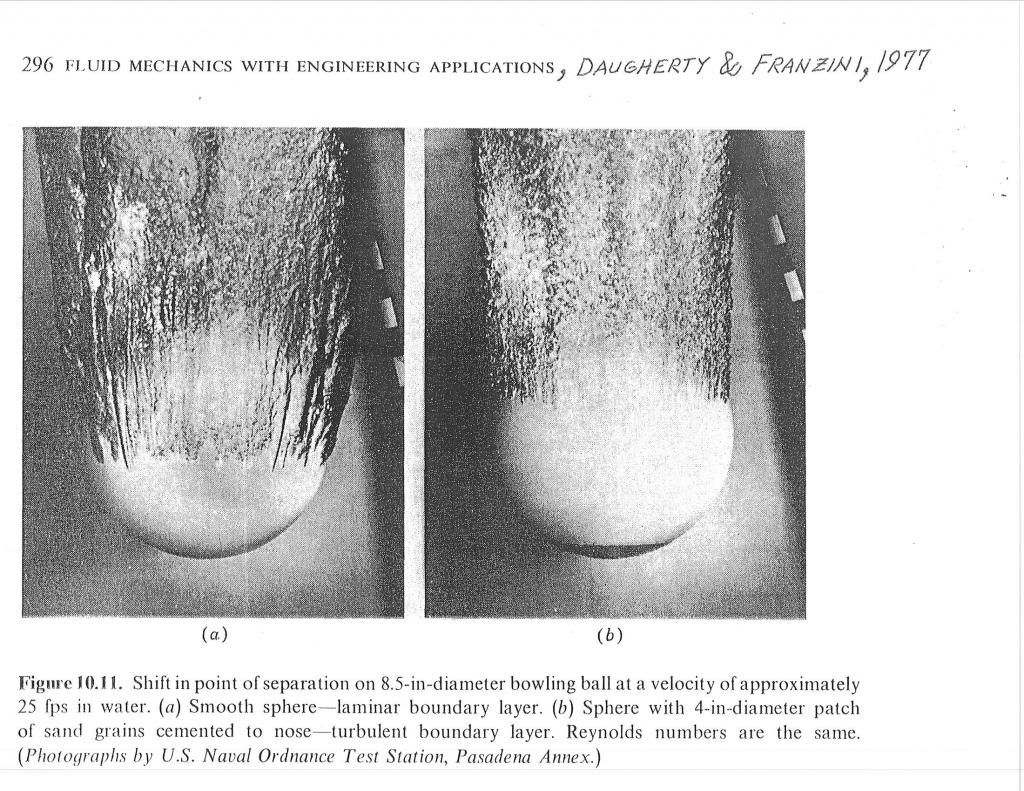Quote:
Originally Posted by He-man

Ive been reading this thread all morning and am really confused as to what i should of for a belly pan. I see that the Chevy Ev1 has a perfectly flat belly pan and looking at aircraft the bodies are smooth as can be on planes. Many of the new high mileage cars have perfectly flat belly pans.
With all this being said, why wouldn't planes be dimpled on the body? I understand that dimpling works to reduce drag on spheres but where is the proof that it works on flat objects? And furthermore, what is the purpose of causing turbulent attached air on the bottom when the top and sides of the car don't necessarily have turbulent air but it is attached?
I am a newby to Aero stuff so if i said something dumb be nice  |
*The drag coefficient of a 3-D body cannot achieve it's lowest drag without a full turbulent boundary layer.
Here you can see the smaller wake and lower drag on the right,after artificial roughness has been introduced

*Airplanes are ruled by skin friction drag,they don't have profile drag like a car.Any thing they can do to reduce a turbulent boundary layer saves them fuel.So no dimpling!
The only exception would be for high-angle-of-attack takeoff or landing,when artificial roughness would make the difference between a crash.